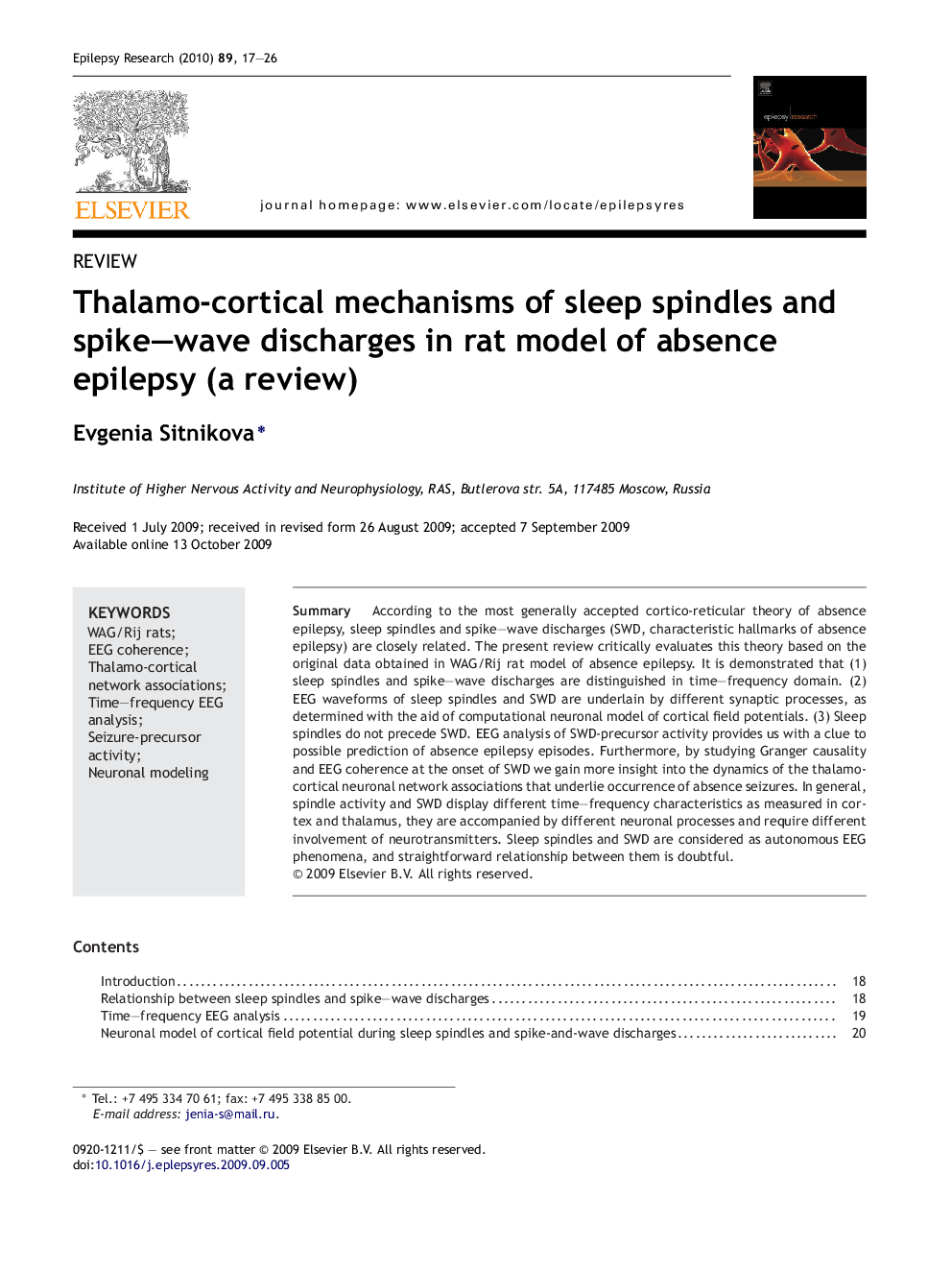| Article ID | Journal | Published Year | Pages | File Type |
|---|---|---|---|---|
| 3052714 | Epilepsy Research | 2010 | 10 Pages |
SummaryAccording to the most generally accepted cortico-reticular theory of absence epilepsy, sleep spindles and spike–wave discharges (SWD, characteristic hallmarks of absence epilepsy) are closely related. The present review critically evaluates this theory based on the original data obtained in WAG/Rij rat model of absence epilepsy. It is demonstrated that (1) sleep spindles and spike–wave discharges are distinguished in time–frequency domain. (2) EEG waveforms of sleep spindles and SWD are underlain by different synaptic processes, as determined with the aid of computational neuronal model of cortical field potentials. (3) Sleep spindles do not precede SWD. EEG analysis of SWD-precursor activity provides us with a clue to possible prediction of absence epilepsy episodes. Furthermore, by studying Granger causality and EEG coherence at the onset of SWD we gain more insight into the dynamics of the thalamo-cortical neuronal network associations that underlie occurrence of absence seizures. In general, spindle activity and SWD display different time–frequency characteristics as measured in cortex and thalamus, they are accompanied by different neuronal processes and require different involvement of neurotransmitters. Sleep spindles and SWD are considered as autonomous EEG phenomena, and straightforward relationship between them is doubtful.
